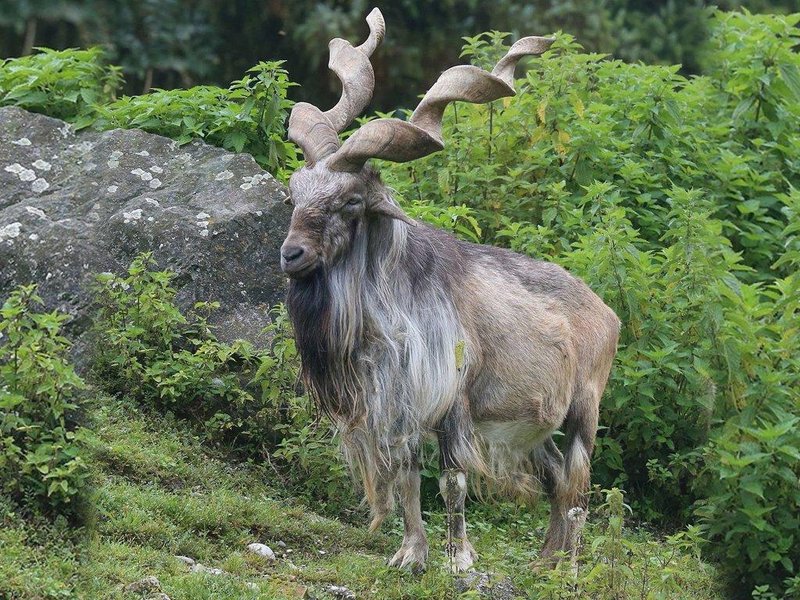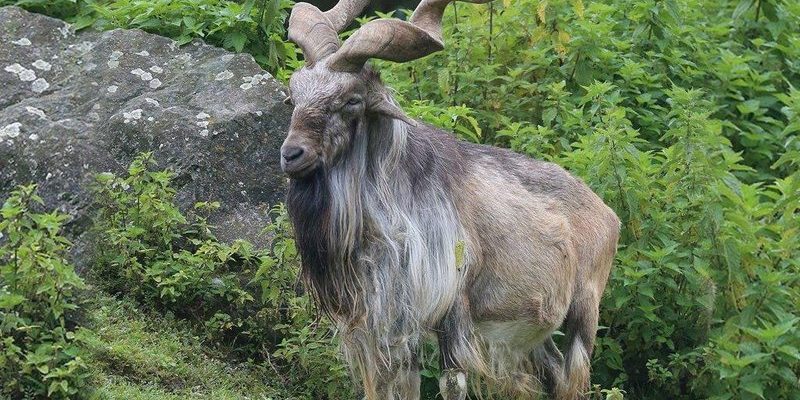
Markhors are more than just striking animals; they symbolize the beauty and complexity of nature. Found primarily in areas like Afghanistan, Pakistan, and Tajikistan, these mountain dwellers roam the steep, rocky terrains with remarkable agility and grace. Just like a skilled climber navigating rocky cliffs, markhors have adapted to their challenging surroundings, making them an integral part of the ecosystem. Understanding their role sheds light on the interconnectedness of wildlife and the importance of biodiversity.
1. Markhor as a Keystone Species
Let’s start by identifying what a keystone species is. It’s like the cornerstone of an archway; removing it can cause the whole structure to collapse. Markhors are considered a keystone species because they significantly impact the plants and other animals in their habitats. By grazing on grasses, shrubs, and young trees, they help control vegetation growth.
Here’s the thing: when markhors consume certain plants, they prevent these species from overgrowing and suffocating the landscape. This grazing promotes biodiversity, allowing various plants to flourish and attract other wildlife. Without markhors, certain plants might dominate the area, leading to a decrease in overall biodiversity.
Plus, markhors themselves are prey for predators like leopards and eagles. This predator-prey relationship helps maintain the balance within the ecosystem. If markhor populations drop, it could lead to an overpopulation of vegetation and affect the species that rely on those plants and the predators that depend on the markhor for food.
2. Distribution and Habitat of the Markhor
Markhors are adaptable creatures found in the mountainous regions ranging from the Hindu Kush to the Himalayas. Their habitats vary, but they primarily thrive in areas with steep slopes, rocky cliffs, and scattered vegetation. Think of it like living in a ski lodge; they need space to roam, forage, and escape from predators.
The different subspecies of markhor—like the Sulaiman and Bukhara markhor—have adapted to specific environments. For example, the Sulaiman markhor prefers lower elevations with dense vegetation, while the Bukhara markhor is found at higher altitudes. This variation in habitat illustrates how important environmental adaptability is for survival.
Honestly, the markhor’s ability to navigate these steep terrains is impressive. They have specialized hooves and strong legs that allow them to climb with precision. This agility not only aids in their survival but also plays a role in seed dispersal. As they eat and move around the landscape, they help spread seeds, contributing to the growth of new plants in their habitat.
3. Impact on Biodiversity
You might be wondering why biodiversity is such a big deal. Well, a healthy ecosystem relies on a variety of species to create balance. Markhors contribute to this balance by maintaining plant diversity and creating habitats. As they graze, they help ensure that no single plant species dominates the landscape, allowing different plants to thrive.
This diversified plant life benefits other animals too. For instance, a richer variety of plants can attract insects, birds, and small mammals, creating a bustling ecosystem. Additionally, markhors create paths and trails through the dense vegetation. These trails not only help other animals navigate but also facilitate seed dispersal and growth in new areas.
Moreover, maintaining biodiversity is essential for climate resilience. Diverse ecosystems are better equipped to withstand environmental changes. So, when markhors help enhance plant diversity, they indirectly contribute to creating ecosystems capable of adapting to things like climate change and habitat loss.
4. Cultural Significance of the Markhor
Markhors are not just important for the ecosystem; they hold cultural significance as well. In many regions, they are seen as symbols of strength and freedom. Among local communities, markhors are often featured in folklore, art, and even hunting traditions. This cultural reverence underscores their importance beyond just environmental impact.
Here’s a fun fact: the markhor is also the national animal of Pakistan. This reflects how deeply intertwined these creatures are with local identity and heritage. Protecting markhors is vital not only for biodiversity but also for preserving cultural values. When local communities engage in conservation efforts, they help ensure that future generations can continue to appreciate these magnificent animals.
By fostering respect for the markhor, communities can promote wildlife tourism, which brings economic benefits and raises awareness of conservation efforts. This creates a win-win situation where both the ecosystem and local people benefit from the presence of this remarkable species.
5. Conservation Efforts for the Markhor
Unfortunately, markhors face threats from habitat loss, poaching, and competition from domestic livestock. Their populations have significantly declined, making conservation efforts essential. Local and international organizations are stepping in to help protect these animals and their habitats.
One such effort is the establishment of protected areas and wildlife reserves. These areas provide a safe haven for markhors to thrive, allowing them to breed and forage without the threat of habitat destruction or poaching. Education programs also play a crucial role. By raising awareness among local communities about the markhor’s ecological importance, conservation groups can foster a sense of stewardship.
Additionally, some communities have embraced eco-tourism as a way to protect markhors while generating income. Sustainable tourism encourages visitors to appreciate the natural beauty of the region, fostering a connection between people and wildlife. In turn, this can lead to greater investment in conservation and protection efforts.
6. The Markhor’s Diet and Foraging Behavior
Markhors are herbivores, primarily feeding on a variety of grasses, shrubs, and leaves. Their diet varies with the seasons, which is crucial for their survival in harsh mountain ecosystems. In spring, they enjoy tender shoots, while in winter, they might resort to fir and pine needles when other food sources are scarce.
Let me explain how their foraging behavior impacts the ecosystem. As markhors graze, they consume specific plants, allowing other species to thrive. This selective feeding is essential for maintaining health in their habitats. They often choose plants that are overabundant, helping to keep ecosystems balanced and vibrant.
Moreover, markhors have a unique way of foraging. They often climb to higher altitudes to find food that other herbivores might not reach. This behavior helps mitigate competition for resources, showing their adaptability in navigating the ups and downs of their environment.
7. The Role of Markhor in Ecosystem Stability
In simple terms, markhors help keep their ecosystems stable. By regulating plant growth and serving as prey for predators, they maintain a balance that supports various life forms. Imagine a well-tuned orchestra; each instrument plays its part to create beautiful music. In the same way, markhors play a vital role in the ecological symphony.
Without markhors, the dynamics of plant and animal life in their habitats would shift dramatically. Increased vegetation without balance could lead to overcrowding and ultimately habitat destruction, affecting countless other species. Thus, protecting the markhor isn’t just about saving one species; it’s about preserving a whole web of life.
This interconnectedness highlights how vital conservation efforts are. By safeguarding markhors, we also protect their habitats, ensuring that other species can thrive alongside them. It’s a reminder of how our actions can ripple through ecosystems, impacting everything from plant life to predator populations.
In conclusion, the markhor plays a critical role in its ecosystem, serving as a keystone species that supports biodiversity, cultural significance, and ecological stability. Understanding and protecting this incredible animal is essential for maintaining the delicate balance of nature. So next time you hear about the markhor, remember it’s not just a beautiful animal; it’s a linchpin in the tapestry of life in its rugged mountain home.

